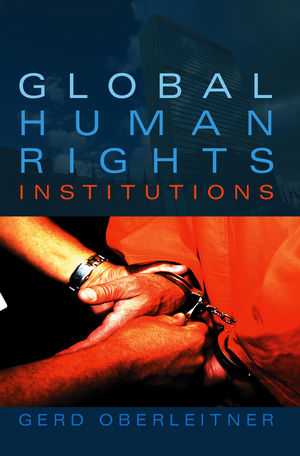Global Human Rights InstitutionsISBN: 978-0-7456-3438-8
Hardcover
248 pages
December 2007, Polity
 This is a Print-on-Demand title. It will be printed specifically to fill your order. Please allow an additional 10-15 days delivery time. The book is not returnable.
Other Available Formats: Paperback
|
||||||
Acknowledgements.
Abbreviations.
1 Introduction.
2 Institutionalizing human rights: expectations, paradoxes, and consequences.
Efficiency, legitimacy, power.
Arena, instrument, actor.
Autonomy and dependence.
Form and function.
Bureaucracy: authority and alienation.
Predominance of law.
Exclusion and inclusion.
Guarding the guards.
Remedy and ritual.
3 The rise of global human rights institutions.
A timeline.
A typology.
Functions, activities, and expectations.
4 United Nations human rights institutions.
Commission on Human Rights.
‘Politicisation’: membership and selectivity.
Standard setting.
Advisory services and technical cooperation.
Response to human rights violations: 1235 and 1503.
Special procedures.
The Commission 1946-2006: achievements and legacy.
Human Rights Council.
Membership.
Mandate.
First steps.
Sub-Commission on the Promotion and Protection of Human Rights.
Membership, mandate, and activities.
Hierarchy, expertise, and politics.
Prospects.
Commission on the Status of Women.
Economic and Social Council.
General Assembly.
A ‘grand debate’ on human rights?.
Leadership, budget, standards, scrutiny.
Third Committee.
Achievements.
United Nations High Commissioner for Human Rights.
A mandate between servant and shield.
From headquarters to the field.
Treaty bodies.
State reports.
Inter-state complaints.
Individual complaints.
Inquiries.
General Comments.
Achievements.
5 Mainstreaming human rights.
From mandate to mainstreaming.
International Labour Organisation.
United Nations Development Programme.
United Nations Children’s Fund.
United Nations Educational, Scientific and Cultural Organisation.
United Nations High Commissioner for Refugees.
United Nations Human Settlements Programme.
World Health Organisation.
Food and Agricultural Organisation.
World Bank and International Monetary Fund.
World Trade Organisation.
Challenges ahead in mainstreaming human rights.
United Nations Security Council.
Safeguarding international peace and security.
Genocide, the responsibility to protect, and human security.
Peace operations.
Democratic legitimacy.
International humanitarian law and civilians in armed conflict.
Criminal justice for human rights violations.
Cooperation, transparency, and the role of NGOs.
Prospects.
6 World courts and human rights.
International Court of Justice.
International Criminal Court.
Towards a world court of human rights?.
7 Non-governmental organisations .
Independence between law and politics.
Consultation, co-operation, compensation, competition.
Functions.
Information, definition, mobilisation.
Agenda-setting, norm-making, and policy development.
Accompanying implementation.
Advocacy, education, and operation.
Legitimacy.
Challenges.
8 Conclusion .
References.
Index



